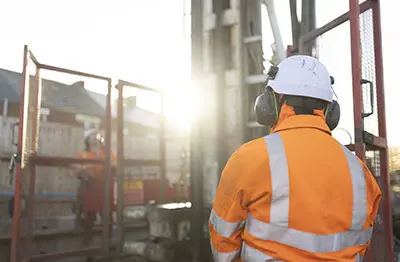

Seismic Monitoring
Understanding Ground Vibrations for Safer Projects
About
What is Seismic Monitoring?
Seismic monitoring plays a crucial role in understanding ground movement, vibration, and structural response across a wide range of civil engineering, infrastructure, and environmental projects.
Whether you're monitoring natural seismicity, construction-induced vibration, or ground response in sensitive environments, seismic instrumentation delivers the insights needed to protect assets, people and progress.
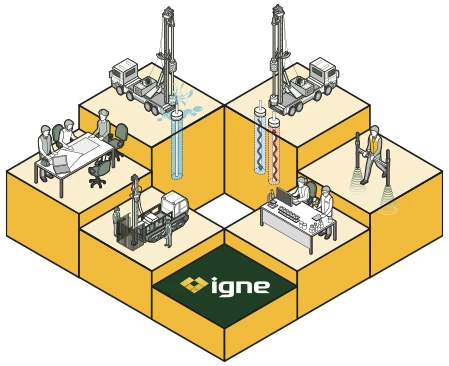
The uses
Why Is Seismic Monitoring Important?
Seismic monitoring allows you to detect and measure ground vibrations over time. These may be caused by natural earthquakes, blasting, tunnelling, piling, traffic, or other construction activities.
Understanding how ground movement propagates and affects nearby structures is key to designing safe, compliant and resilient developments.
Applications include:
- Monitoring vibrations from construction activity such as piling, drilling or demolition
- Assessing potential impacts on heritage or sensitive structures
- Earthquake monitoring and early warning systems
- Recording microseismic activity related to mining, energy extraction or tunnelling
- Gathering ground response data for dynamic analysis and modelling
- Structural health monitoring and compliance with standards such as ISO 4866, British BS 7385-2, and German DIN 4150-3
Seismic data can also help validate design assumptions, assess settlement risks, or provide evidence for stakeholders and regulators.
The science
How Does Seismic Monitoring Work?
It typically involves the use of geophones, accelerometers or broadband seismometers to detect and record ground vibration.
These instruments are often installed in boreholes to isolate them from surface noise and improve data quality, but they can also be placed at the surface, embedded in structures, or configured as part of a seismic array.
Data is usually recorded by a data logger and can be transmitted remotely in real-time, enabling instant alerts if thresholds are exceeded.
The process
Specialist Drilling for Seismic Sensor Installation
Borehole seismic monitoring requires expert drilling and careful placement of sensors to ensure accuracy and longevity. At Igne, we tailor every installation to the geology, project requirements and monitoring goals.
Our typical approach includes:
- Drilling to precise depths using rotary techniques
- Ensuring strict verticality control during the drilling process. This is controlled either by wireline coring followed by stage reaming or by using directional drilling and mud motors
- Installation of fill grouted casing to depth
- Cabling to secure, weatherproof surface data hubs or enclosures
- Commissioning and integration with data loggers and remote telemetry
Our team ensures correct orientation, depth accuracy and long-term sensor performance across all installations.
The benefits
Benefits of Borehole Seismic Monitoring
Choosing borehole seismic monitoring over surface setups offers several key advantages:
- Higher sensitivity to deep or subtle ground movement
- Reduced interference from surface noise, traffic or weather
- Improved accuracy for identifying event depth and magnitude
- Ability to monitor layered ground conditions in detail
- Long-term, low-maintenance monitoring with robust data integrity
These benefits are especially valuable on infrastructure and energy projects where precise ground behaviour understanding is critical.
The end
What Happens When Monitoring Is Complete?
When seismic monitoring is no longer required, we can decommission installations safely and in line with environmental best practice.
Boreholes are sealed using approved grout materials to prevent cross-contamination or fluid migration, and we can provide all necessary documentation to demonstrate compliance.
FAQ
Frequently Asked Questions about Seismic Monitoring
- What is seismic monitoring used for in construction and infrastructure projects?
Seismic monitoring measures ground vibrations caused by construction activities, natural earthquakes, tunnelling, piling, demolition, and more. It helps engineers understand how these vibrations travel through the ground and impact nearby structures. This is essential for protecting sensitive buildings, ensuring regulatory compliance, and designing safe infrastructure
- Why are boreholes drilled for seismic monitoring?
Boreholes allow seismic sensors to be installed below ground, away from surface noise such as traffic or weather. This improves the quality and sensitivity of the data. Borehole installations are especially useful for detecting micro-seismic events, measuring ground motion at different depths, and capturing more accurate dynamic behaviour.
- How deep are seismic monitoring boreholes?
Depths can vary widely depending on the monitoring goals and geology. Boreholes may be 10m to 200m or more. We work with clients to determine the optimal depth for effective sensor placement, signal clarity and geological relevance.
- What types of sensors are used in boreholes for seismic monitoring?
The most common types are geophones, accelerometers, and broadband seismometers. These can detect different ranges of frequency, motion and ground vibration. Some installations also include multiple sensors at different depths within a single borehole for layered data acquisition.
- Can seismic monitoring detect ground movement before failure or collapse?
Yes, especially with real-time monitoring and correctly installed sensors. Seismic systems can provide early warnings of slope movement, subsidence or ground instability. This is critical on projects involving embankments, tunnels, cuttings or areas prone to landslides or settlement.
- Is seismic monitoring required by regulation?
It often is. Many local authorities, Network Rail, Transport for London and Highways agencies require vibration monitoring near heritage assets, sensitive structures or transport corridors. Seismic monitoring also supports compliance with standards such as BS 7385 and DIN 4150 for vibration limits.
- How long can a seismic borehole be used for?
With proper installation, seismic monitoring boreholes can remain in use for many years. Sensors are designed for long-term deployment and, once installed and tested by Igne’s team, typically require minimal maintenance.
- Can seismic monitoring be combined with other instrumentation?
Yes, boreholes can also house piezometers, inclinometers, fibre optic sensors and other instruments. We regularly install multi-use boreholes to support integrated ground and structural monitoring strategies.
- What drilling methods are used for seismic monitoring boreholes?
We use rotary, rotary coring, or sonic drilling methods depending on the geology and site conditions. Our teams select the best technique for stability, depth precision, and minimal vibration interference.
- What happens to the boreholes after monitoring is finished?
When monitoring ends, Igne decommissions boreholes in accordance with environmental best practice. This usually involves backfilling and sealing with grout to prevent vertical migration of groundwater or contaminants. All decommissioning is fully documented.
- Can seismic monitoring data be accessed remotely?
Yes; most modern systems are integrated with data loggers and telemetry units, allowing real-time data transmission, automated reporting and instant alerts if vibration thresholds are exceeded.
- How quickly can Igne mobilise for a seismic monitoring installation?
We have nationwide coverage and a fleet of specialist rigs, meaning we can mobilise rapidly to meet tight project deadlines. We’ll assess access, ground conditions and programme requirements to ensure efficient delivery.
The Experts
Why Choose Igne for Seismic Monitoring Installations?
Seismic sensor installation demands precision, geological understanding and technical capability. Igne delivers all three. As experts in specialist drilling and monitoring, we ensure every seismic sensor is installed for optimum accuracy and data quality.
We work across rail, highways, energy, urban regeneration, and heavy civils - supporting clients with monitoring solutions that enhance safety, reduce risk and deliver confidence in the ground.
If your project involves vibration risks, seismic sensitivity or a requirement for ground movement data, talk to Igne. Our seismic monitoring installations are backed by specialist drilling expertise, technical rigour and a commitment to helping you make smarter decisions.

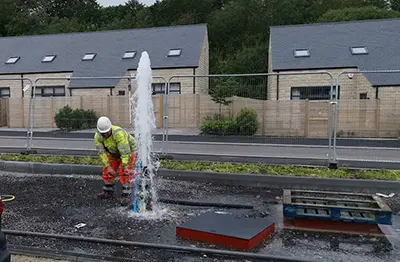
Artesian Boreholes

Angle Boreholes
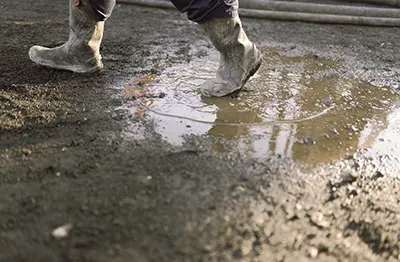
Drilling with Mud
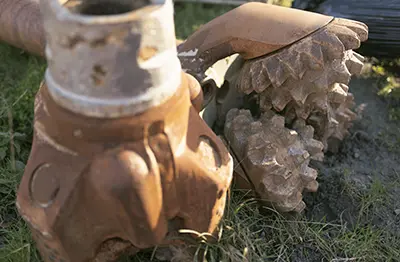
Large Diameter Boreholes
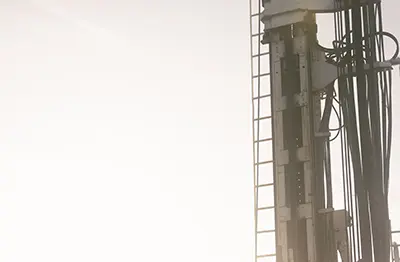
Deep Boreholes
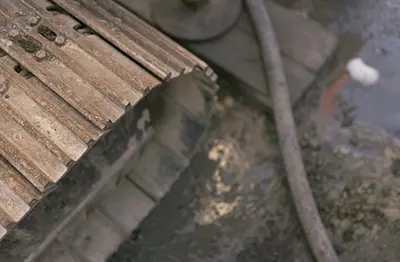
Acidisation
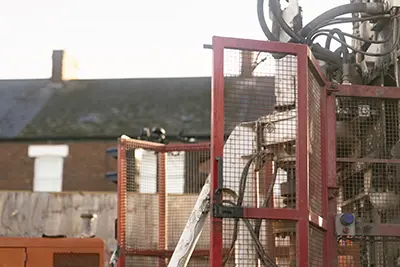
Hydrofracturing

Dewatering

Monitoring Boreholes

Vibrating Wire Piezos

Fibre Optics

Seismic Monitoring

Deep Wireline Coring

Gas Control

Deep Soakaways

Decommissioning

Specialist Plant & In Hole Equipment Hire

